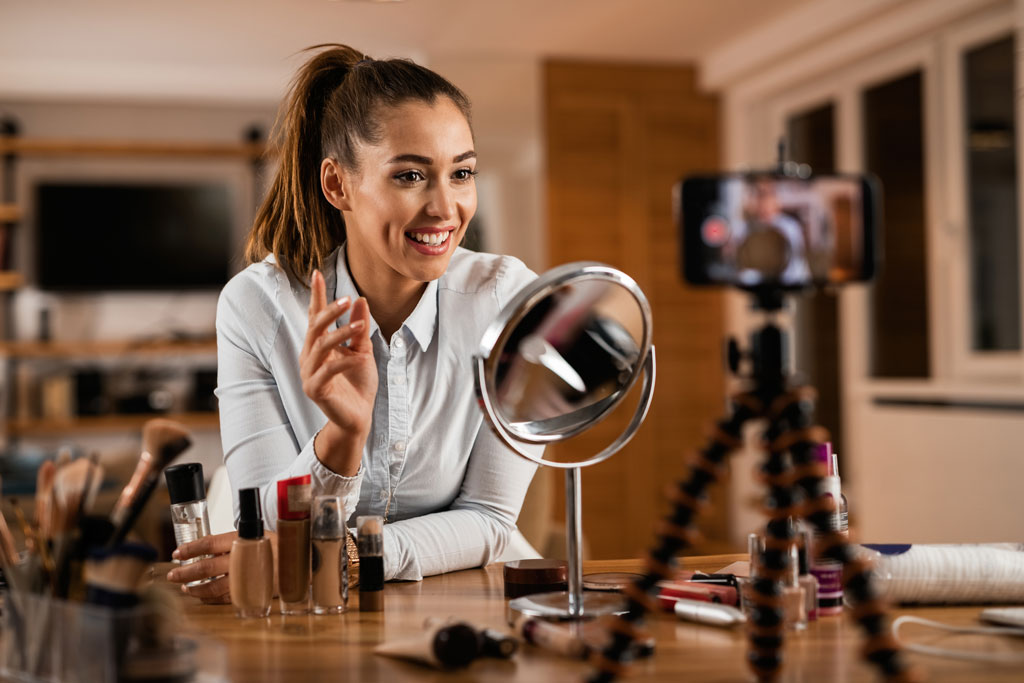Sarah-Jane Lowes, head of digital and social at Droga5 Dublin, part of Accenture Song, shares new consumer research findings that place reliability and authenticity at the top of creator economy engagement.
The influencer era emerged in the 2010s and has had a firm grip on social content ever since, marking a fundamental change in the economy of the digital world. What started out as selfies and personal promotion has since turned into a global billion-dollar industry, seeing a record $21 billion investment by brands in 2023 alone.
Looking at how the average brand engages with the influencer economy, I’m struck that many haven’t moved beyond a 2010s mindset. The partnerships are highly curated, the brand’s message is clearly defined and communicated, with the influencer acting as a mere vessel to amplify the brand. It’s not a ‘creative’ partnership in a true sense, and that’s a problem for brands who want to succeed and make the most of the influencer economy.
The data supports this, Accenture Song recently carried out research with Irish consumers around the ‘deinfluencing’ category to better understand this emergent behaviour. ‘Deinfluencer’ content is focused on real and authentic reviews of products which often steer consumers away from purchasing decisions or towards ones that are of better value.
Why does this matter for brands? Over 40% of people surveyed said that they have been influenced by social media to buy something once or twice. Over 60% of people say that they didn’t make a purchase based on ‘deinfluencer’ content, while micro-influencers are the most popular content creators among the surveyed.
In addition, our research found that 31% of Irish consumers favour following micro and nano influencers over more macro/mega influencers. This suggests that consumers are seeking relatable creators, and that it’s no longer enough for brands to just show up online in the spaces their audience occupies.
Brands need to show their audiences that they truly do understand the communities they belong to in order to be noticed. Strong creator communities unlock long-term gains and opportunities for brands and beyond the monetary, they represent new ways for brands to connect with younger audiences and tap into emerging cultural trends.
At the Cannes Lions festival earlier this year, Les Binet, Grace Kite and Tom Roach spoke about the ‘3rd Age of Effectiveness’, demonstrating that consumers do not respond positively to heavily branded content on social and it is the one they skip most often. What resonates with consumers most, and what they enjoy watching, is native content which is the social creator space.
Multiple varied reasons are behind this consumer behaviour shift. The current economic climate isn’t a favourable one – just because we’re not in a recession doesn’t mean consumers aren’t feeling the pinch of high inflation and stagnating wages. Nothing is less relatable than mega-influencers showing off giant hauls, or unboxing mountains of free PR. It’s not inspirational or aspirational – and nor does it inspire consumer trust. In contrast, micro-influencers and those unafraid to give bad reviews or say ‘you don’t need to buy this’ give consumers the confidence that when and if they do buy, they’re making the right choice.
Brands need to understand this and move away from a traditional approach to influencer collaborations and towards greater relevance. This necessarily involves risks. Global brands like Adidas, IKEA, and Oatly are understanding the benefits of a creative-first approach, and that the creator economy has fundamentally shifted in form. They’re showing up authentically in communities and embracing the youth culture narrative.
CeraVe is another great example – the typically ‘serious’ skincare brand which has gained cult-like status on TikTok partnered with Emma Chamberlain to incredible results. The partnership worked because CeraVe was brave enough to show a different side to the brand, moving beyond the dermatologist-tested-and-approved narrative into a space where the person using it had acne and wasn’t afraid to show her audience how she dealt with it, with style and flair.
Shifting or leaning into a different side of a brand identity doesn’t mean losing or diluting it. Locally in Ireland, I’m seeing brands look on from the sidelines, unsure on how to fully embrace the new market demands. What all brands – and especially the ones still waiting – need to understand is that the idea of inspiration and aspiration has metamorphosed.
Millennials, Gen Z and Gen Alpha are often sidestepping ‘traditional’ milestones like weddings and are locked out of others, namely home ownership and luxury purchases. Instead, they’re embracing what they can own, like dupes. There’s now aspiration in affordability. Make-up brand NYX scored a hit with a dupe for Dior’s lip oil while the fashion brand Telfar has released a number of sell-out bags colloquially known as the ‘Brooklyn Birkin’, a nod to Hermes’ extremely expensive and wait-list only bags.
Brands need to keep in mind that content creators are eclipsing celebrities in their ability to define culture. Too many brands still feel afraid to tap into smaller audience spaces. The era of siloed consumers and ‘scenes’ is fully behind us; everyone is embracing diverse tastes and interests meaning that communities are intersecting and growing.
The internet has put culture in a blender, and now there are thousands of cultural bubbles that brands should be trying to access but don’t know how to. The answer is the right creative partnership that looks beyond the gloss and curation towards the niche, the fanatical, and even the weird. Showing up in these spaces is essential to creating and maintaining relevancy and cultural cachet that guarantees success – not simply survival – in an ever-shifting marketplace.























